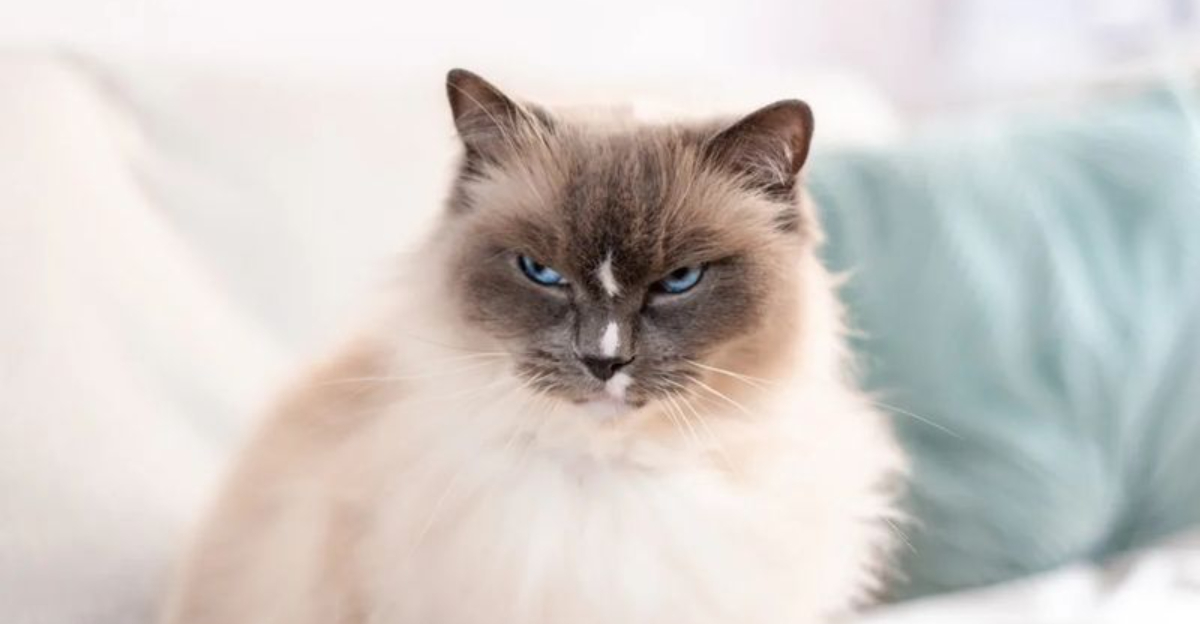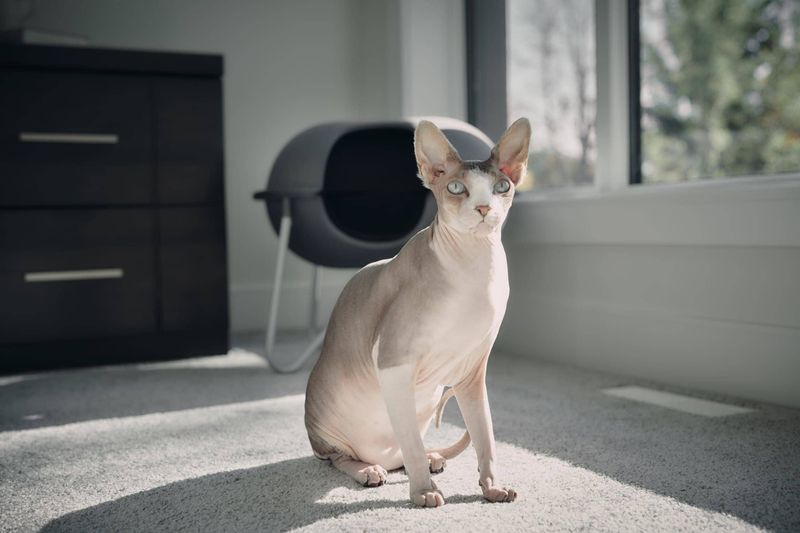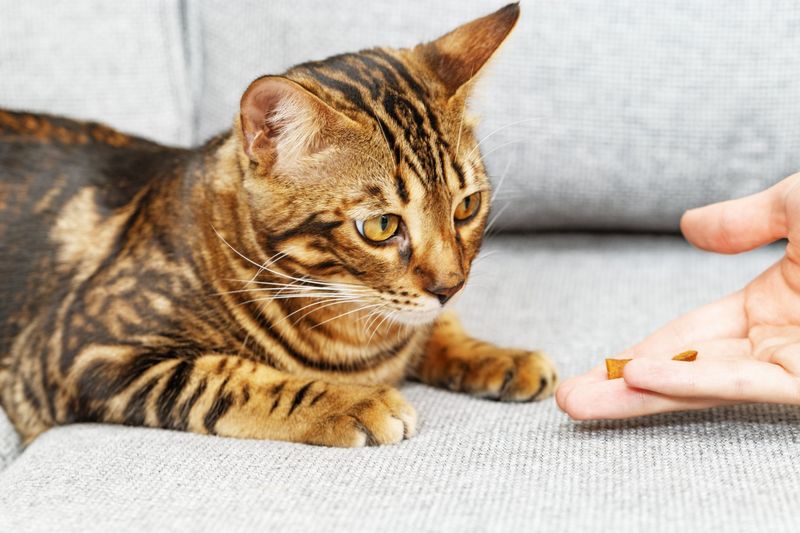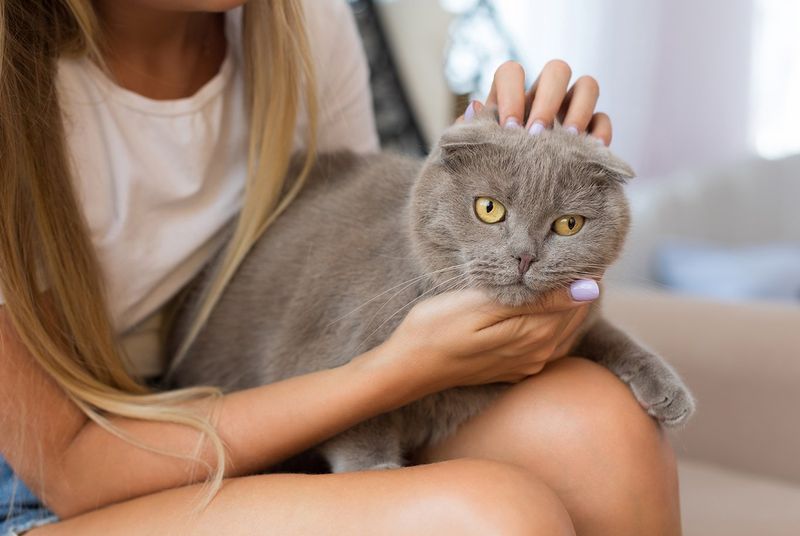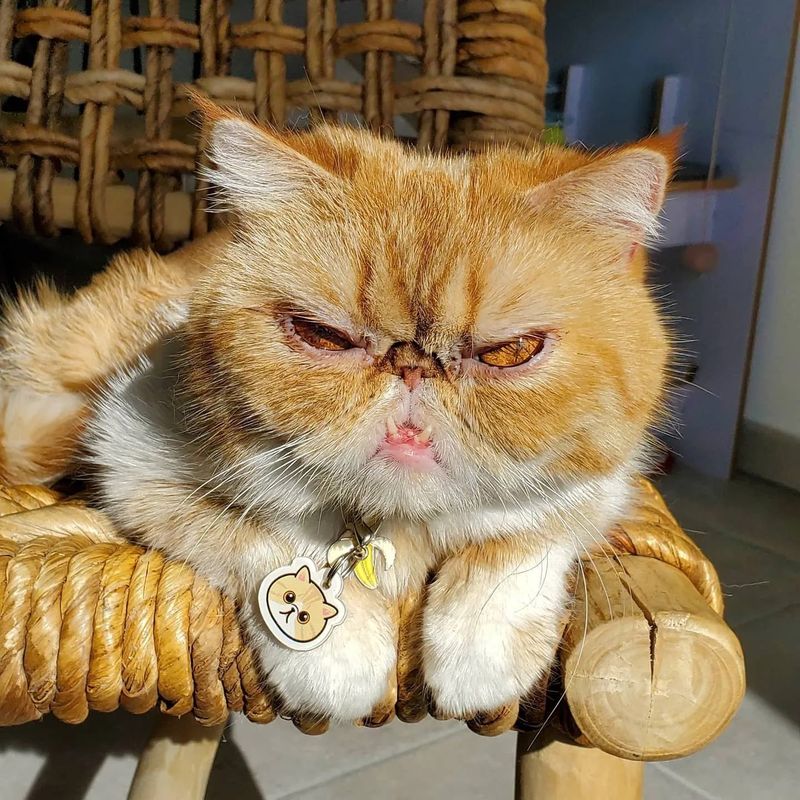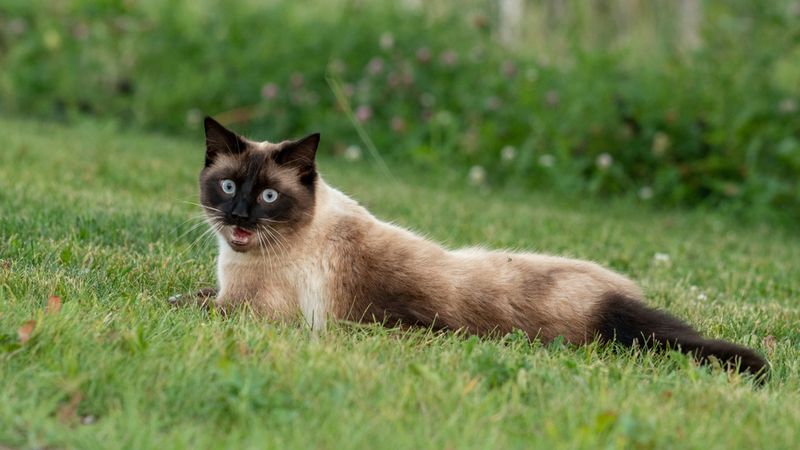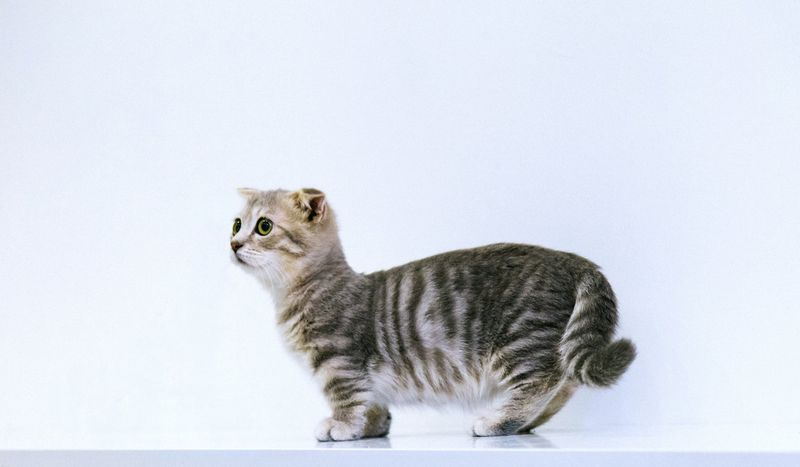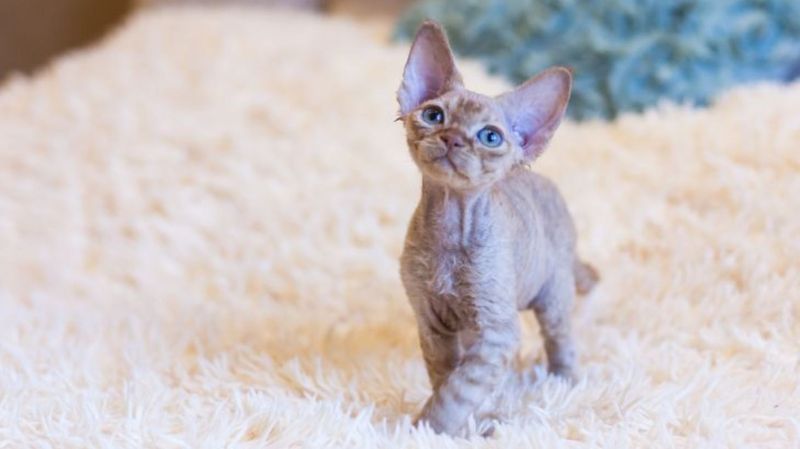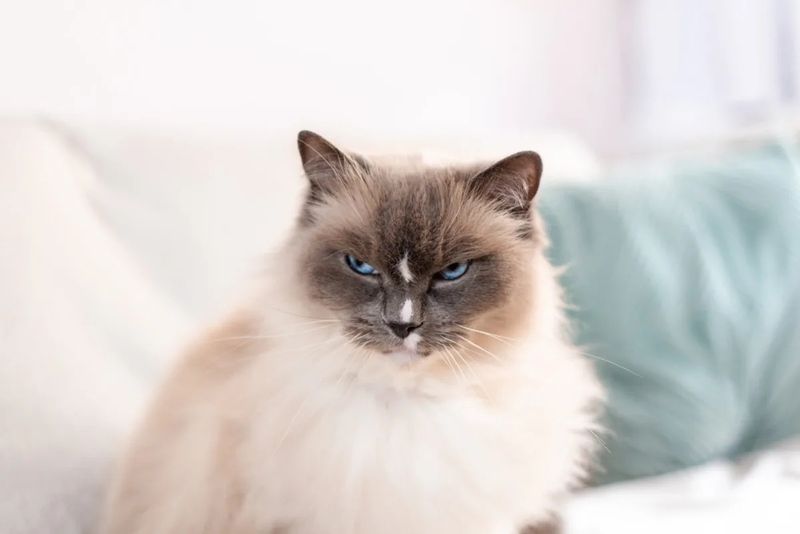📖 Table of Content:
Not all cat breeds are created equal when it comes to being ideal pets. While every cat has its own personality, certain breeds consistently present challenges that make them difficult companions for the average owner. Veterinarians, breeders, and animal behaviorists have identified specific breeds that often require special care, have health issues, or display temperaments that don’t mesh well with typical household environments.
1. Sphynx
Hairless and high-maintenance, Sphynx cats require regular bathing to remove body oils that would normally be absorbed by fur. Their exposed skin makes them extremely vulnerable to sunburn and cold temperatures.
Owners must invest in special clothing and sunscreen formulated for cats. Their high energy levels demand constant attention and enrichment activities.
Sphynx cats also have notoriously high food requirements due to their fast metabolism, making them expensive to feed. Their lack of fur means they constantly seek warmth, often climbing under blankets or demanding to sleep with their owners, which some people find intrusive.
2. Bengal
Bengals retain much of their wild ancestry, making them incredibly energetic and sometimes destructive in confined spaces. These cats climb everything, knock items off shelves, and vocalize loudly when bored or seeking attention.
Many owners find themselves overwhelmed by their need for physical activity and mental stimulation. Bengals require large spaces with climbing opportunities and interactive play several times daily.
Their intelligence becomes problematic when they learn to open doors, cabinets, and even refrigerators. Without proper outlets for their energy, Bengals commonly develop behavioral issues including aggression, excessive vocalization, and inappropriate elimination that frustrates even experienced cat owners.
3. Scottish Fold
Behind their adorable folded ears lies a serious genetic mutation that causes cartilage problems throughout their bodies. Scottish Folds suffer from a condition called osteochondrodysplasia, which leads to painful joint issues, arthritis, and mobility problems, often beginning at a young age.
Ethical concerns surround the breeding of these cats since their signature trait directly causes suffering. Veterinary bills quickly mount as these cats age and require pain management and mobility assistance.
Many owners aren’t prepared for the heartbreak of watching their cat struggle with chronic pain. Some veterinarians refuse to treat these cats because they view the breeding as cruel, making proper healthcare challenging to obtain.
4. Persian
Persians come with extreme grooming demands that many owners underestimate. Their long, dense coats require daily brushing to prevent painful mats that can lead to skin infections. Without proper grooming, these cats quickly develop health issues.
Their flat faces cause numerous breathing problems, excessive tearing, and eye infections. Many Persians struggle with eating due to their facial structure and develop dental problems that require professional intervention.
The breed is prone to polycystic kidney disease, a genetic condition that significantly shortens lifespan. Their low energy levels are often mistaken for laziness, but frequently indicate breathing difficulties or overheating due to their thick coats and compromised airways.
5. Siamese
Famously vocal, Siamese cats produce loud, persistent yowls that many owners find unbearable. Their demanding personality means they rarely give their humans peace and quiet, especially when they want attention or food.
Siamese form intense attachments to their owners and can become destructive or develop anxiety when left alone. Their intelligence makes them masterful at getting into trouble, opening cabinets and finding hidden items.
Modern breeding has led to neurological issues in some lines, causing compulsive behaviors like excessive grooming or tail-chasing. Temperature-sensitive coloration means their coat darkens with age, disappointing owners who chose them for their lighter kitten coloration and weren’t expecting such dramatic changes.
6. Savannah
Crossed with wild servals, Savannah cats possess instincts incompatible with typical home environments. Their predatory drive makes them dangerous around small pets, including other cats, birds, and rodents. First-generation Savannahs can weigh up to 25 pounds with the strength to match.
Legal restrictions exist in many states and countries, creating problems for owners who relocate. Their territorial marking behaviors include spraying urine on walls and furniture, with a particularly strong odor that’s difficult to eliminate.
Savannahs require specialized diets closer to raw feeding, making meal preparation time-consuming and expensive. Their high energy levels and jumping ability (up to 8 feet vertically) mean no surface in your home is safe from their exploration.
7. Munchkin
Munchkins suffer from their deliberately bred short legs, which prevent normal cat behaviors like jumping and climbing. Their cartilage abnormalities frequently lead to painful osteoarthritis and back problems as they age.
Ethical controversies surround this breed since their main feature is actually a genetic mutation that causes physical limitations. Munchkins struggle to defend themselves from other pets and cannot escape danger as effectively as normal cats.
Their inability to move normally leads to frustration and sometimes depression when they cannot access high perches or engage in typical feline behaviors. Breeding challenges mean many kittens are born with severe deformities, and some die in utero when they inherit two copies of the short-leg gene.
8. Exotic Shorthair
Created as a short-haired version of Persians, Exotic Shorthairs inherit all the same breathing difficulties due to their flat faces. Their compressed nasal passages make them prone to heat stress, exercise intolerance, and sleep apnea that disrupts household sleep patterns.
Tear stains permanently mark their faces as their eyes cannot drain properly, requiring daily cleaning to prevent skin infections. Many develop cherry eye, entropion, and other painful eye conditions requiring surgical correction.
Despite their shorter coats, they shed tremendously, covering furniture and clothing with dense undercoat. Their brachycephalic faces make them snore loudly and struggle with dental problems as their teeth are often crowded into a shortened jaw, leading to expensive veterinary dentistry work.
9. Devon Rex
The delicate, wavy fur of Devon Rex cats breaks easily, resulting in bald areas that don’t fully recover. This minimal coat puts them at risk for skin conditions like sunburn, acne, and yeast infections that demand consistent vet treatment.
Genetic health issues plague the breed, including hypertrophic cardiomyopathy, a serious heart condition, and patellar luxation that affects mobility. Their ears produce excessive wax requiring weekly cleaning to prevent infections.
Devon Rex cats have extraordinarily high metabolism rates requiring constant feeding, sometimes up to twice the amount of food as regular cats. Their mischievous personalities lead them to destructive behaviors when bored, and they commonly develop separation anxiety that manifests in inappropriate elimination around the home.
10. Ragdoll
Ragdolls lack self-preservation instincts, making them dangerously trusting of strangers and unaware of threats. Their tendency to go limp when picked up (hence their name) prevents them from fighting back against predators or escaping dangerous situations.
Genetic health problems run rampant in the breed, including hypertrophic cardiomyopathy, which can cause sudden death. Their thick coats mat easily near the ski,n where owners don’t notice until painful skin infections develop.
Ragdolls grow extremely large (up to 20 pounds,) making them difficult to handle for many owners, especially when they need veterinary care. Their docile nature means they often won’t complain when in pain, allowing health issues to progress to dangerous levels before owners notice something is wrong.
